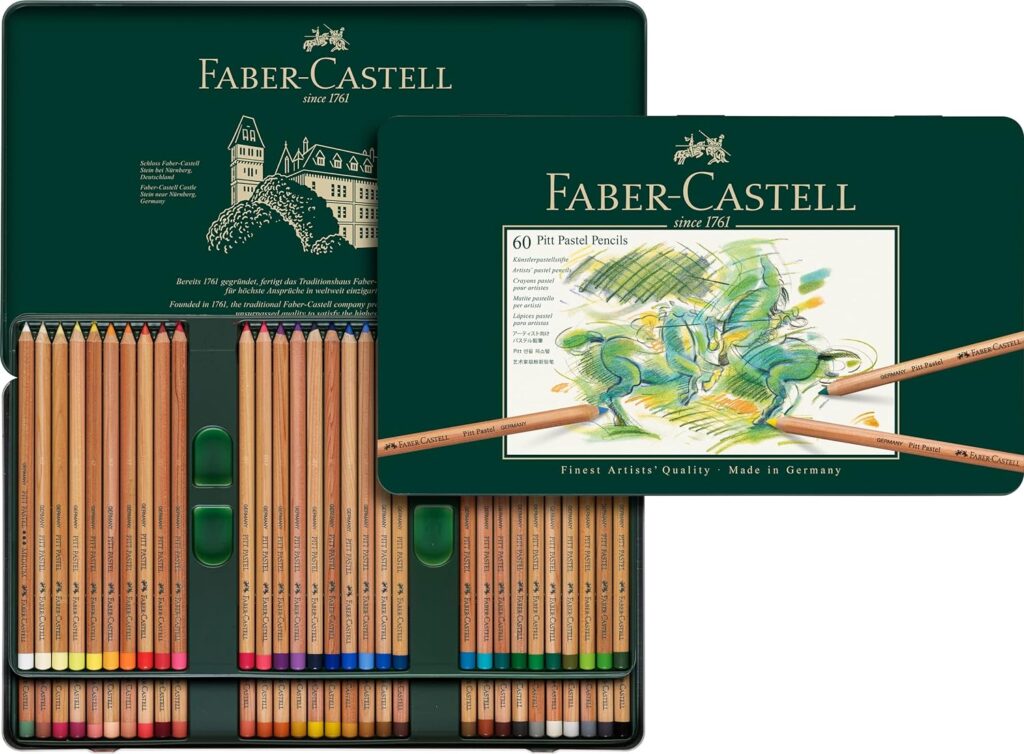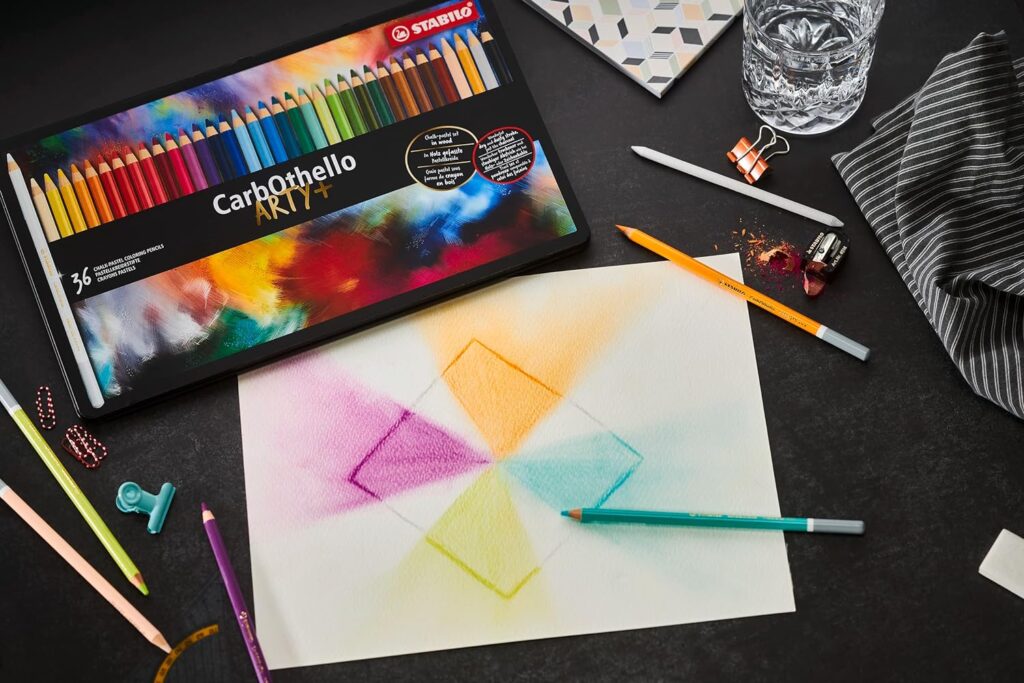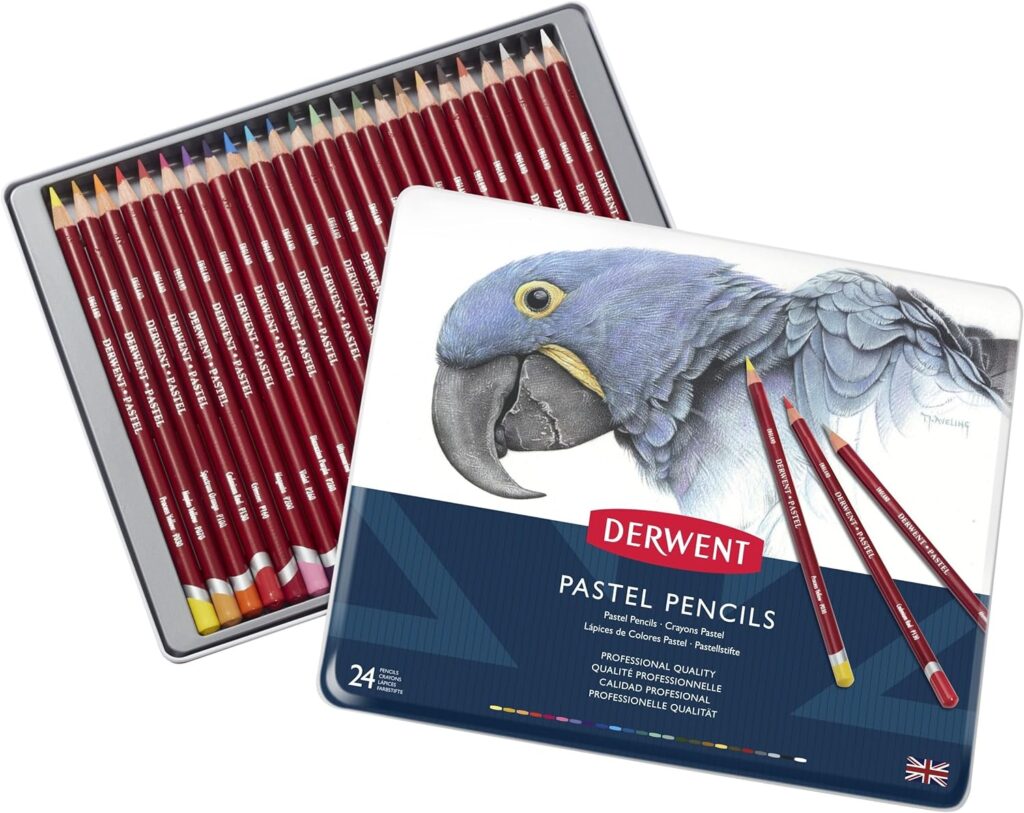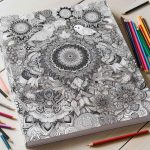This website uses cookies so that we can provide you with the best user experience possible. Cookie information is stored in your browser and performs functions such as recognising you when you return to our website and helping our team to understand which sections of the website you find most interesting and useful.

The Magic of Pastel Colored Pencils

Pastel Pencils Overview
Pastel colored pencils are a versatile medium favored by artists for their unique textures and blending capabilities. This section delves into the characteristics of pastel pencils and how they differ from traditional colored pencils.
Characteristics of Pastel Pencils
Pastel pencils are characterized by their core, which contains pigment and binders, typically made of chalk and a small amount of gum arabic. These pencils offer a balance between softness for blending and firmness for creating crisp lines. Unlike conventional colored pencils, pastel pencils produce strong, opaque marks even on dark backgrounds.

Key characteristics include:
- Translucency: Pastel pencils are translucent and do not dry, allowing for layering from light to dark.
- Pigment: High pigment concentration for vibrant colors.
- Blending: Smooth, paint-like transitions between colors are easier to achieve.
- Texture: The chalk-based core provides a unique, gritty texture.
| Characteristic | Description |
|---|---|
| Core Material | Pigment with chalk binders |
| Blending | Smooth transitions |
| Transparency | Translucent layers |
| Texture | Gritty surface |
Key Differences from Colored Pencils
While pastel pencils and colored pencils may appear similar, they have distinct differences in composition and application. Understanding these differences helps artists choose the right medium for their work.
- Binder Composition: Pastel pencils use chalk and a small amount of gum arabic as binders, whereas colored pencils rely on a blend of vegetable oils and waxes (UART Pastel Paper).
- Application Technique: Pastel pencils are typically used from light to dark due to their translucent nature. In contrast, colored pencils often require working from dark to light.
- Blending: Pastel pencils allow for smoother blending and color transitions, making them ideal for achieving a paint-like effect.
- Opacity: Pastel pencils produce stronger marks even on dark surfaces, unlike colored pencils which struggle to layer light colors over dark ones.
| Feature | Pastel Pencils | Colored Pencils |
|---|---|---|
| Binder | Chalk, gum arabic | Vegetable oils, waxes |
| Application | Light to dark | Dark to light |
| Blending | Smooth transitions | Requires more effort |
| Opacity | Strong on dark surfaces | Weaker on dark surfaces |
For artists seeking to explore the best colored pencil brands, check out our guide on best colored pencil brands. Additionally, if you’re interested in specialized pencils, consider reading about metallic colored pencils and oil-based colored pencils.
Working with Pastel Colored Pencils
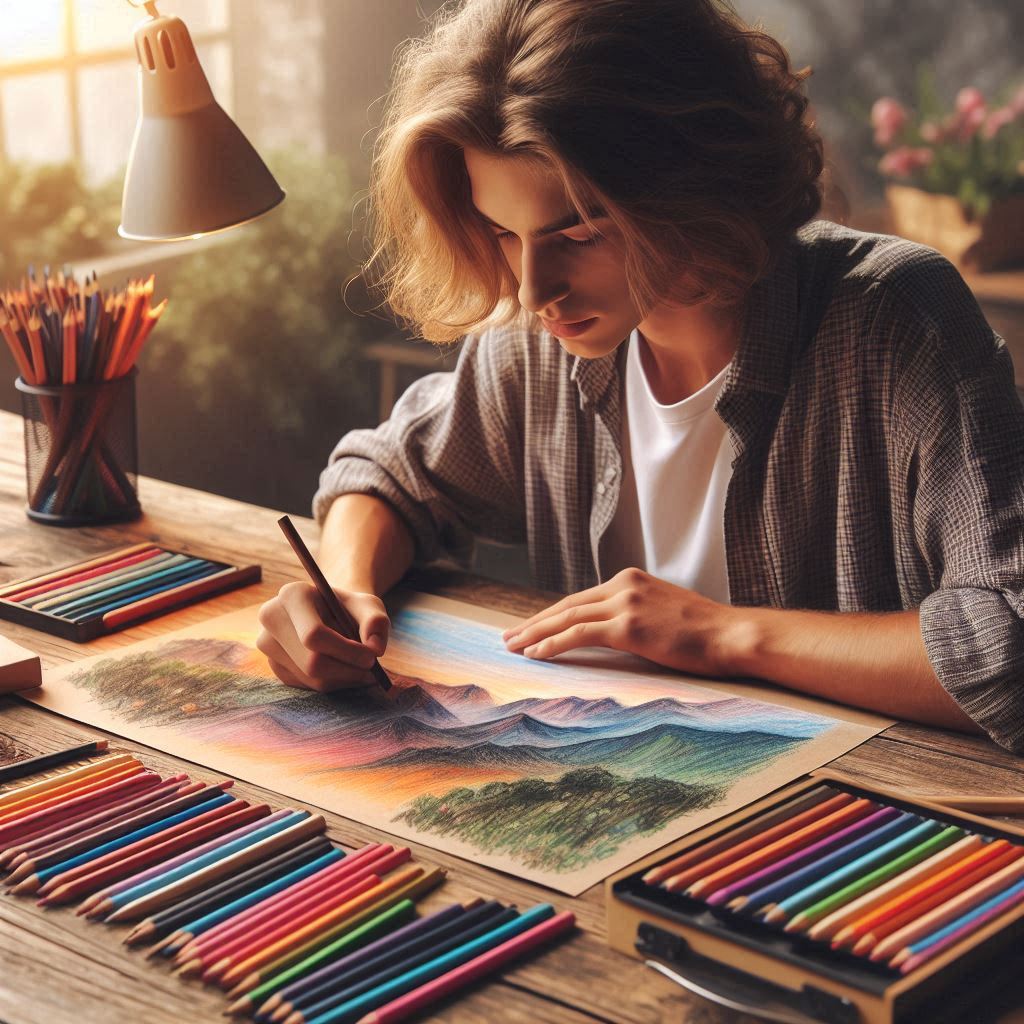
Understanding how to effectively use pastel colored pencils can significantly enhance your artwork. This section provides techniques and compares pastel pencils to colored pencils in application.
Techniques for Using Pastel Pencils
Pastel pencils blend the best of both worlds: the soft, blendable texture of pastels and the precision of pencils. Here are some key techniques to master:
- Layering from Light to Dark: It is generally recommended to work from light to dark when using pastel pencils. This helps in achieving a more acceptable color build-up. Applying strong colors first and then trying to add light colors on top can lead to a muddy mess (Colin Bradley Art).
- Blending: Pastel pencils are excellent for creating smooth, paint-like transitions from one color to another. This is easier with pastel pencils compared to colored pencils, which require more effort to achieve a similar effect before the paper runs out of tooth (UART Pastel Paper).
- Detail Work: The firmness of pastel pencils allows for crisp lines and fine details. Soft pastel pencils are recommended for expressive or painterly drawing styles, while harder pastel pencils suit artists focusing on intricate details.
- Correcting Mistakes: One of the advantages of pastel pencils is the ability to produce strong white marks atop dark colors. This makes it easier to correct mistakes or add highlights without compromising the artwork’s integrity.
Pastel Pencils vs. Colored Pencils in Application
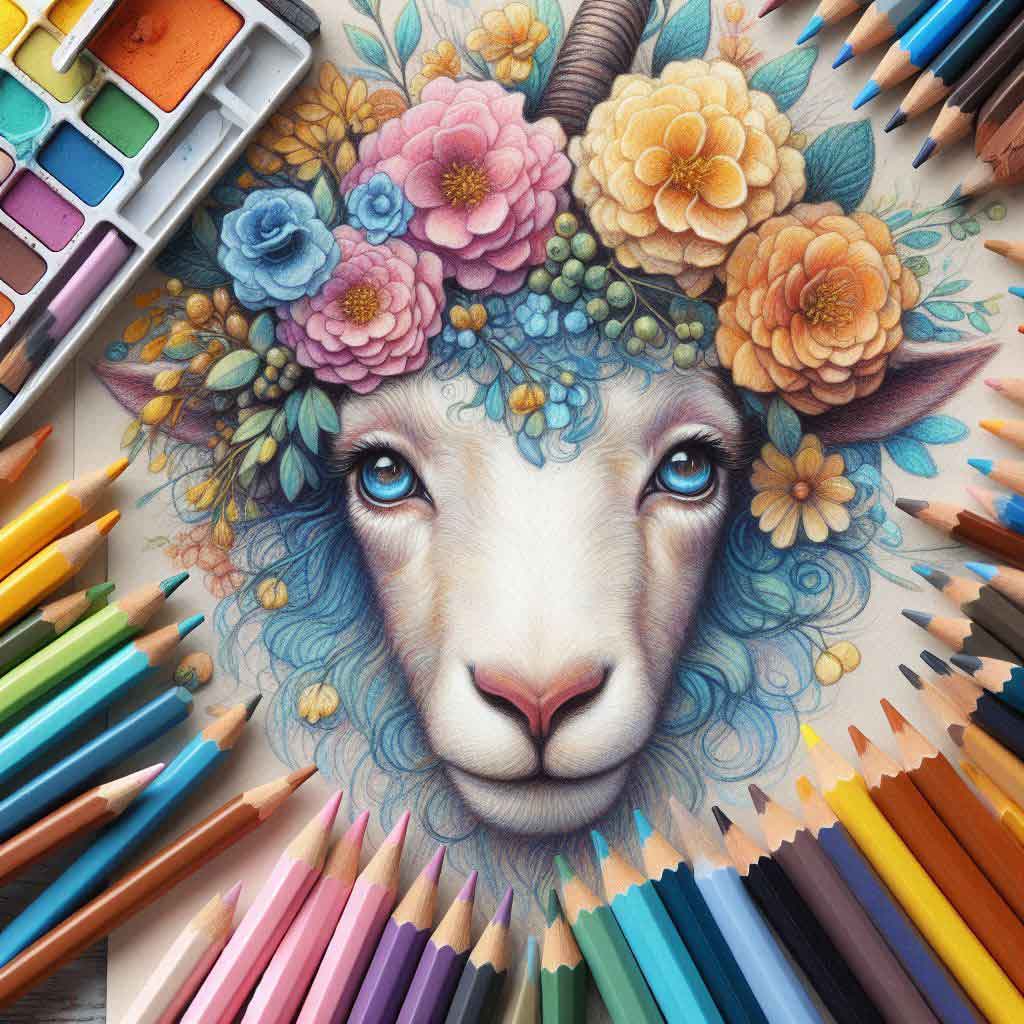
While both pastel pencils and colored pencils are popular choices among artists, there are key differences in their application:
| Feature | Pastel Pencils | Colored Pencils |
|---|---|---|
| Binder | Pigment and chalk | Wax |
| Blending | Easy to blend, smooth transitions | Requires effort, limited by paper tooth |
| Layering | Work from light to dark for best results | Often work from light to dark |
| Detail Work | Firmness allows for precision | Softer, may not hold fine details as well |
| Messiness | Less mess than soft pastels | Clean application |
Pastel pencils have a core containing pigment and binders, usually chalk, encased in wood. This allows them to offer a good compromise between softness for blending and firmness for crisp lines (Creative Bloq). In contrast, colored pencils utilize wax as binders, which can limit their blending capabilities and require more effort to achieve smooth transitions.
For artists interested in exploring different types of colored pencils, consider checking out professional color pencils or softcore colored pencils. These resources provide additional insights and recommendations to help elevate your artistic skills.
Top Pastel Pencil Brands
Selecting the right pastel colored pencils can elevate your artwork to new heights. Here are three top brands that stand out for their quality and performance: Pitt Pastel Pencils by Faber-Castell, Stabilo CarbOthello Pastel Pencils, and Derwent Pastel Pencils.
Pitt Pastel Pencils by Faber-Castell
Pitt Pastel Pencils by Faber-Castell are renowned for their high pigment concentration and compact lead. Artists often use them as a complement to pastel crayons for fine details or on their own. These pencils are ideal for drawing lines, shading, blending, and creating delicate color transitions.
- Pigment Concentration: High
- Core Firmness: Firmest among pastel pencils
- Best For: Detailed work, portraits, pet drawings
- Price: $2.90 USD per pencil (Potato Art Studios)
Advantages:
- Excellent for fine details and precision work
- Smooth application with minimal mess
Disadvantages:
- Requires light fixing
- Can be smudged by fingers
Stabilo CarbOthello Pastel Pencils
Stabilo CarbOthello Pastel Pencils are appreciated for their softness and affordability. With a price of $2.20 USD per pencil, they are the most budget-friendly option among top brands (Potato Art Studios). These pencils feature a soft core that allows for quick and easy color application.
- Pigment Concentration: High
- Core Firmness: Softest among pastel pencils
- Best For: Quick color application, blending
- Price: $2.20 USD per pencil (Potato Art Studios)
Advantages:
- Affordable
- Soft core for easy blending
Disadvantages:
- Not all colors in the range are lightfast
Derwent Pastel Pencils
Derwent Pastel Pencils offer a balance between firmness and softness, making them versatile for different artistic techniques. They feature a range of neutral colors and are slightly firmer than Stabilo CarbOthello, but softer than Faber-Castell (Potato Art Studios).
- Pigment Concentration: High
- Core Firmness: Medium
- Best For: Versatile use, neutral color palettes
- Price: $2.90 USD per pencil (Potato Art Studios)
Advantages:
- Versatile for different techniques
- Good range of neutral colors
Disadvantages:
- Slightly more expensive than Stabilo CarbOthello
| Brand | Pigment Concentration | Core Firmness | Best For | Price (USD per pencil) |
|---|---|---|---|---|
| Faber-Castell Pitt | High | Firm | Details, portraits | 2.90 |
| Stabilo CarbOthello | High | Soft | Blending, quick application | 2.20 |
| Derwent | High | Medium | Versatile use, neutral colors | 2.90 |
Choosing the right pastel pencils depends on your specific needs and artistic style. Whether you prefer the precision of Pitt Pastel Pencils, the soft application of Stabilo CarbOthello, or the versatility of Derwent, each brand offers unique advantages. For more information on different types of colored pencils, check out our articles on professional color pencils and best color pencils for artists.
Choosing and Using Pastel Pencils
Selecting the right pastel pencils can significantly enhance your artistic work. Here are some key factors to consider and best practices for using these versatile tools.
Factors to Consider When Selecting Pastel Pencils
Several factors should influence your choice of pastel colored pencils, ensuring they meet your specific needs and preferences.
- Pigment Quality: High pigmentation ensures vibrant colors and better performance. Brands like Pitt Pastel Pencils by Faber-Castell are well-regarded for their high pigment content.
- Firmness: The hardness or softness of the pencil core affects application. Faber-Castell PITT pastel pencils are the firmest, ideal for thin lines and precision work (Potato Art Studios). In contrast, Stabilo CarbOthello pastel pencils are the softest, perfect for quick and easy color application.
- Lightfastness: Lightfastness refers to the resistance of pigments to fading when exposed to light. Nearly all 84 colors of the professional-grade pastel pencils have high lightfastness ratings (Creative Bloq).
- Price: Budget is another consideration. Stabilo CarbOthello is the most affordable brand, priced at $2.20 USD per pencil.
- Color Range: A broad color range allows for greater versatility. Derwent pastel pencils offer a range of neutral colors, while Koh-I-Noor provides 48 bright colors with good intensity.
| Brand | Firmness | Lightfastness | Price per Pencil (USD) |
|---|---|---|---|
| Faber-Castell PITT | Firmest | High | $2.90 |
| Stabilo CarbOthello | Softest | Varies | $2.20 |
| Derwent | Medium Firmness | Medium | $2.50 |
| Koh-I-Noor | Soft | Good | $2.60 |
Best Practices for Sharpening and Working with Pastel Pencils
Proper care and technique can extend the life of your pastel pencils and enhance your artwork.
- Sharpening Techniques: Use a high-quality sharpener or a blade to achieve a fine point without breaking the core. Koh-I-Noor pastel pencils are easy to sharpen with a blade and have a strong casing.
- Blending and Smudging: For smooth blends, use your fingers or blending tools. Pitt pastel pencils can be smudged easily and require light fixing to set the artwork (Faber-Castell).
- Layering Techniques: Build colors gradually by layering light applications. This helps in achieving depth and richness in your artwork.
- Protection and Fixing: Always use a fixative spray to protect your finished piece and prevent smudging. This is crucial for maintaining the integrity of your art.
- Storage: Store pastel pencils in a cool, dry place. Keep them in a pencil case or box to prevent damage and keep them organized.
For more detailed techniques, check out our guide on colored pencils for shading and explore the best practices for working with softcore colored pencils.
By considering these factors and following these best practices, artists can effectively select and use pastel pencils to create stunning artwork. Explore more options and find the best color pencils for artists to elevate your artistic projects.
